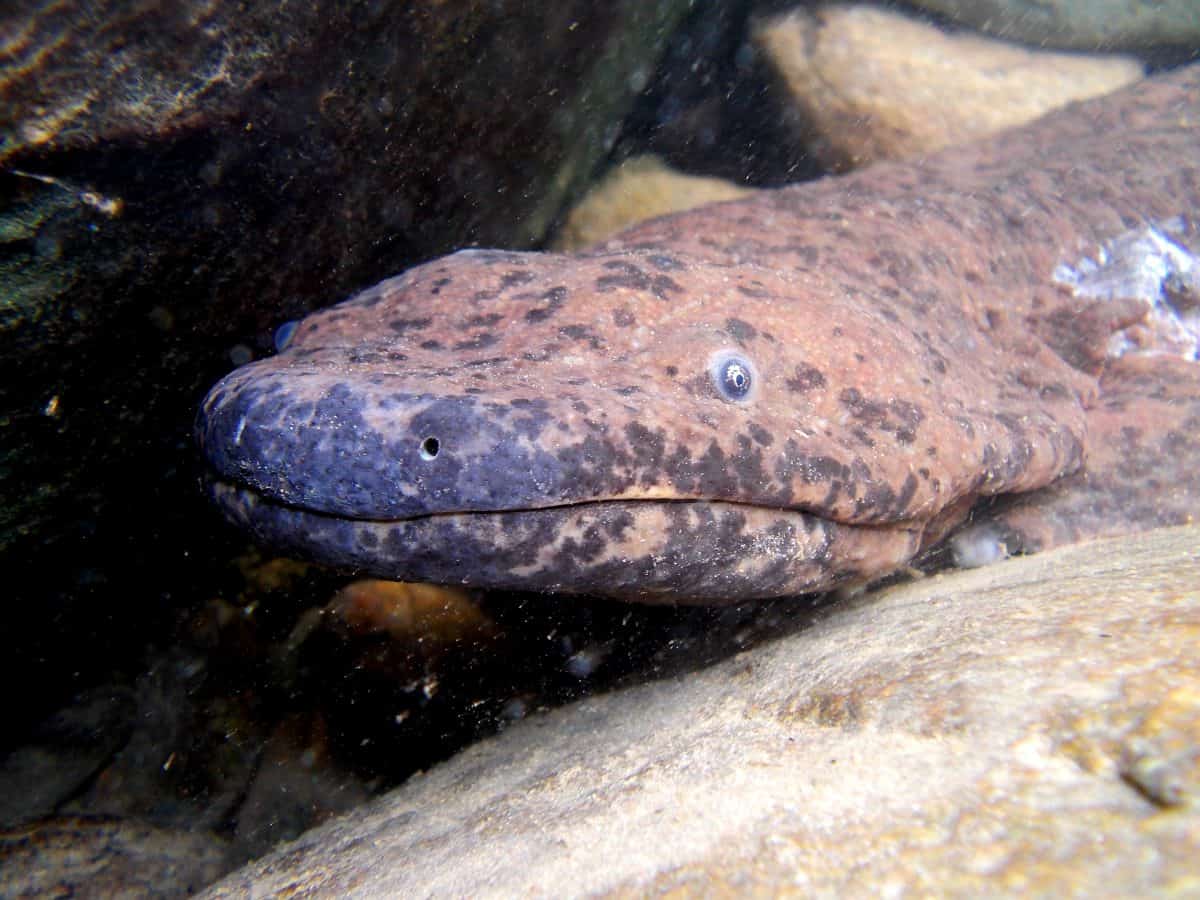
A new species of giant salamander identified from a specimen at the Natural History Museum could be the world’s biggest amphibian.
The animal, that lived at ZSL London Zoo for 20 years was thought to be a Chinese giant salamander, a species currently critically endangered.
But a new DNA examination of it has revealed it to be a new species which is actually bigger that its Chinese cousin, making it the largest amphibian in the world.
The specimen had been held by the museum for 74 years and is presumed to still live in the wild but mistaken for a Chinese giant salamander, previously been considered a single species.
The new species has been called the South China giant salamander which can reach nearly two metres and is the largest of the 8,000 amphibian species alive today.
In their research, scientists from ZSL and London’s Natural History Museum used DNA from 17 museum specimens collected in the early 20th century and analysed tissue samples from wild salamanders, revealing three genetic lineages.
These were from different river systems and mountain ranges across China and they concluded the species could have diverged more than three million years ago .
Lead study author professor Samuel Turvey, from the Zoological Society of London (ZSL), said: “Our analysis reveals that Chinese giant salamander species diverged between 3.1 and 2.4 million years ago.
“These dates correspond to a period of mountain formation in China as the Tibetan Plateau rose rapidly, which could have isolated giant salamander populations and led to the evolution of distinct species in different landscapes.”
They identified three types of salamander including the Andrias davidianus, the Chinese giant salamander, the Andrias sligoi or South China giant salamander and a third species which is yet to be named.
The South China giant salamander, was first proposed in the 1920s based on unusual salamander from southern China that lived at London Zoo for 20 years.
The idea was abandoned but has now been confirmed by today’s (Tues) study.
Researchers used the same animal, which has been preserved as a specimen in the Natural History Museum for 74 years to define the characteristics of the new species.
The third unnamed new species, from the Yellow Mountains, is still only known from tissue samples and has yet to be formally described.
Prof Turvey said: “The decline in wild Chinese giant salamander numbers has been catastrophic, mainly due to recent overexploitation for food.
“We hope that this new understanding of their species diversity has arrived in time to support their successful conservation.
“But urgent measures are required to protect any viable giant salamander populations that might remain.”
He added: “Salamanders are currently moved widely around China, for conservation translocation and to stock farms that cater for China’s luxury food market.
“Conservation plans must now be updated to recognise the existence of multiple giant salamander species, and movement of these animals should be prohibited to reduce the risk of disease transfer, competition, and genetic hybridisation.”
Researchers said the study highlights how museum collections can play an essential role in the conservation of critically endangered species.
Melissa Marr, a PHD researcher at the Natural History Museum London, said: “These findings come at a time where urgent interventions are required to save Chinese giant salamanders in the wild.
“Our results indicate that tailored conservation measures should be put in place that preserve the genetic integrity of each distinct species.
“Our research also highlights the central role that The Natural History Museum’s collections can play in the conservation of Critically Endangered species.”
The paper was published today (Tues) in the Ecology and Evolution journal.